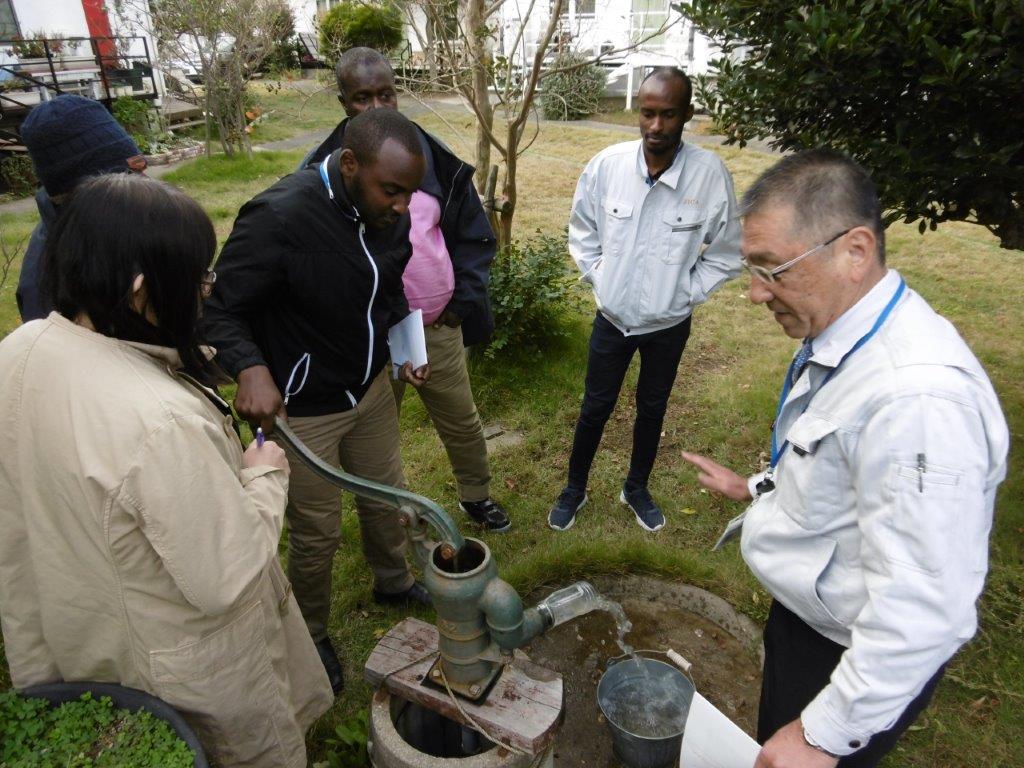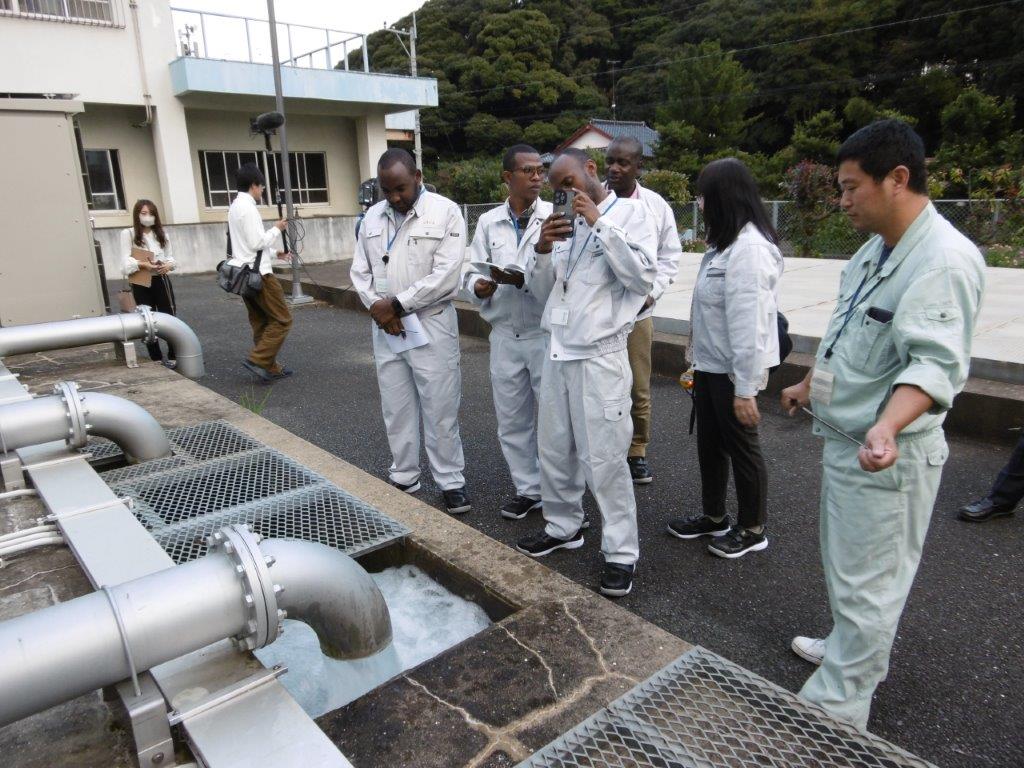Participatory Safe Water Management in Rural Areas in African Countries (B)
For the Future of Africa
Nov.1‚ 2023 to Dec.5‚ 2023
Kiyoshi HARAGUCHI‚ Course leader

Training about wells

Site visit 1
There are said to be more than a million wells in Africa as a whole. Since around 2000‚ JICA has been moving forward with the development of waterworks in urban areas and the provision of wells in rural areas‚ and more than 10‚000 wells have been drilled. However‚ surveys have discovered that roughly 30% of them are out of order or have been abandoned. Accordingly‚ JICA has been forging ahead with a long-term project aimed at creating sustainable operation and maintenance systems for water supply facilities in countries such as Uganda and Zambia.

Site visit 2
Originally‚ JICA Hokkaido was in charge of Participatory Safe Water Management in Rural Areas in African Countries (A) for French-speaking countries‚ and JICA Shikoku was in charge of Participatory Safe Water Management in Rural Areas in African Countries (B) for English-speaking countries. However‚ JICA Kyushu has run Course B since FY2019. Although the course was held once in 2019‚ after that it was provided three times as remote training due to the COVID-19 pandemic. In FY2023‚ we were finally able to hold the second training course in Japan as JICA Kyushu.

Site visit 3
For the technical part of the training‚ the participants visited municipalities and companies to learn about topics such as the operation and maintenance of underground water. They were able to acquire detailed knowledge by observing and handling pump equipment at specific sites and factories. In particular‚ during the training in Tokyo‚ via lectures and field trips ‚ they were able to come into contact with people from a company that has actually drilled in Africa for underground water and carried out operation and maintenance. Apparently both parties were immensely satisfied by the experience.
In the part dealing with intangible aspects‚ there were lectures on topics such as how to build the consensus among residents necessary for sustainable maintenance and management‚ and on educational issues utilizing environmental education‚ after which lively discussions took place. The participants also exchanged opinions with volunteers involved in community-based activities. Time was set aside in the curriculum for discussions amongst the participants‚ and it seems that face-to-face discussion about shared challenges added greater depth to their understanding. The return to training courses in Japan after conducting remote training courses due to the impact of COVID-19 made me keenly aware once again of the importance of face-to-face training‚ and how tremendously effective it is.

Water quality testing training
However‚ for Africa‚ food supply and water-related issues are major threats from population growth. The import of commodities is one possible way to handle food-related issues‚ but it must be said that it will be extremely difficult to solve water-related issues. It is no exaggeration to say that Africafs growth will be greatly influenced by whether water-related issues can be resolved or not. Goal 6 of the SDGs is gEnsure availability and sustainable management of water and sanitation for all.h Japan and the rest of the world need to make all-out efforts to support the future of Africa on a path which will ensure that no one gets left behind.



